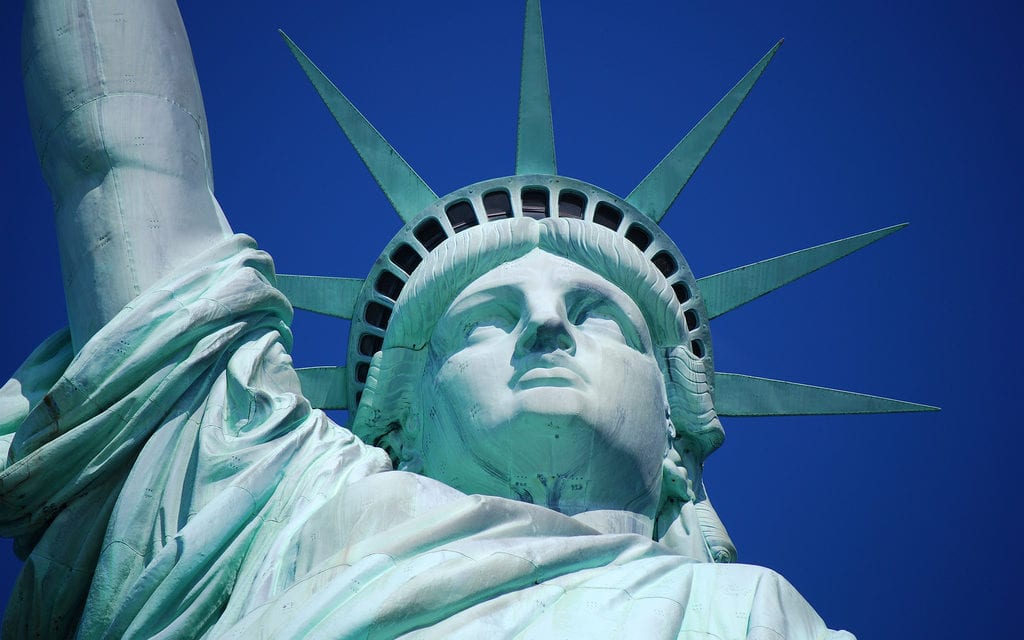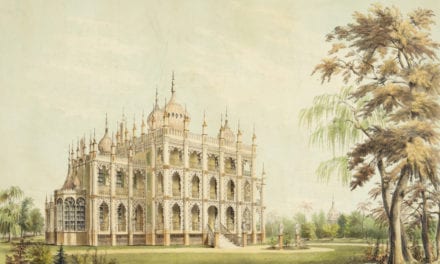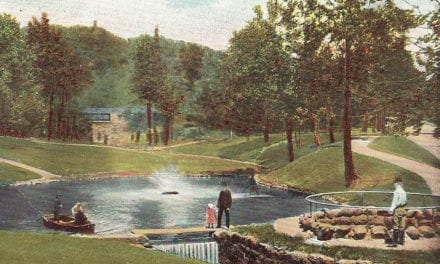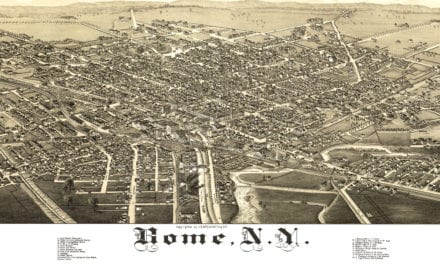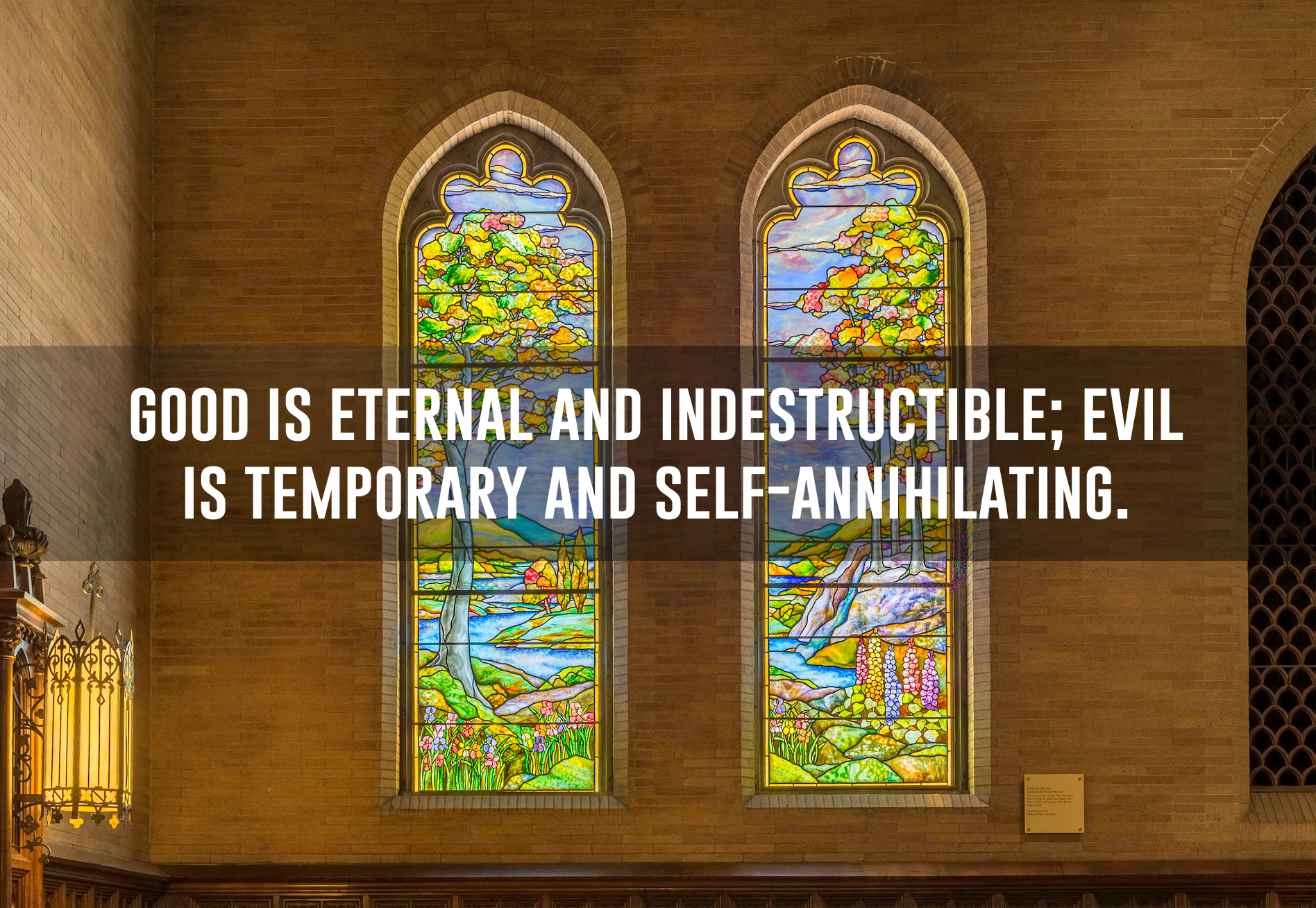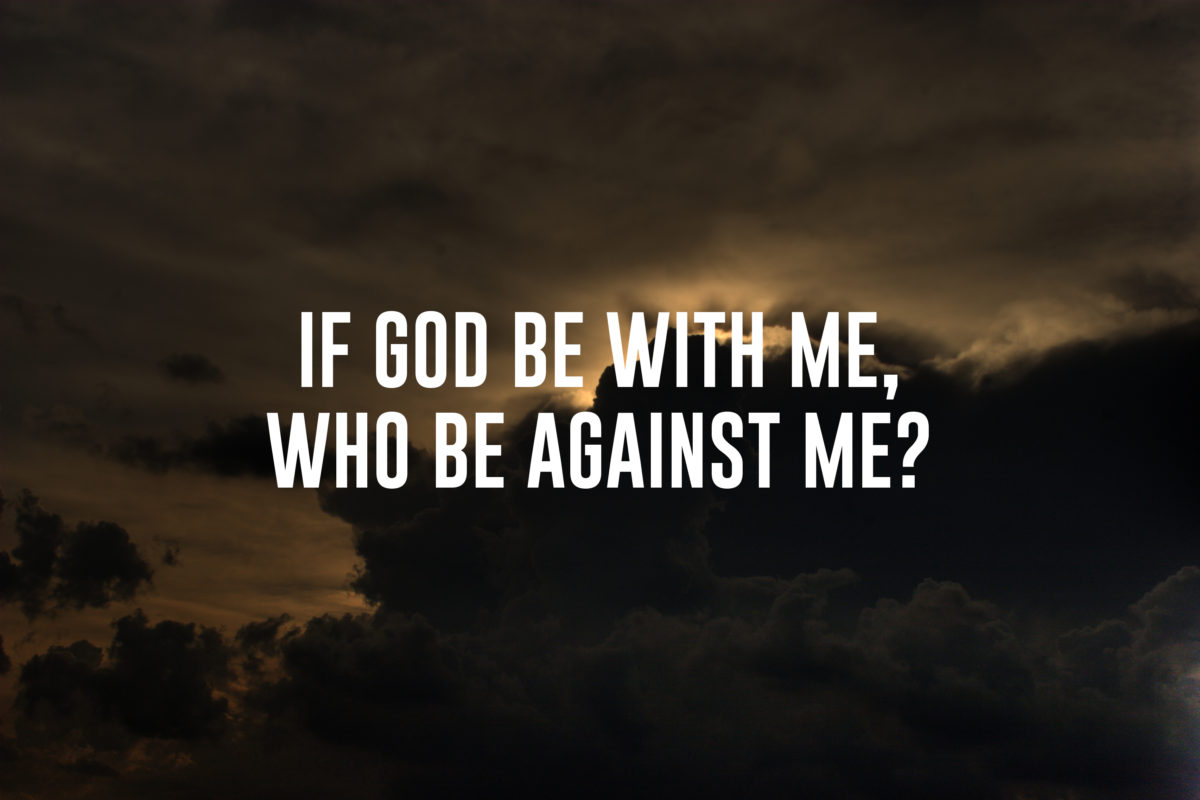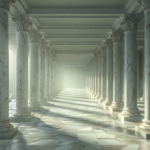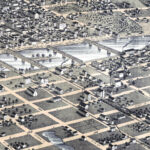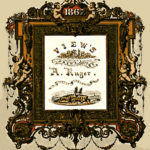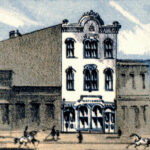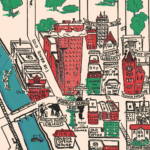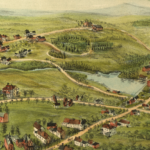In 1869, Frederic Bartholdi was commissioned by the Egyptian government to design a lighthouse for the Suez Canal. He designed a colossal statue of a robed woman holding a torch, calling it Egypt Brings Light to Asia. Sound familiar? He would later name the Statue of Liberty, Liberty Enlightening the World.
“Bartholdi saw the possibility of achieving a colossal project in the land of his dreams. Its location was to be at the entrance to the Suez Canal nearing completion in 1867 when Frederic Bartholdi first proposed it. In form a colossal fallah (fallah, in Arabic, means farmer) many times life-size and holding aloft a torch, the theme being ‘Progress’ or ‘Egypt carrying the Light to Asia’, it was to be the embodiment Egypt’s Europeanization and referred particularly to the great new canal itself.” (The Statue of Liberty by Marvin Trachtenberg, 1976)
Egypt Brings Light to Asia, 1869
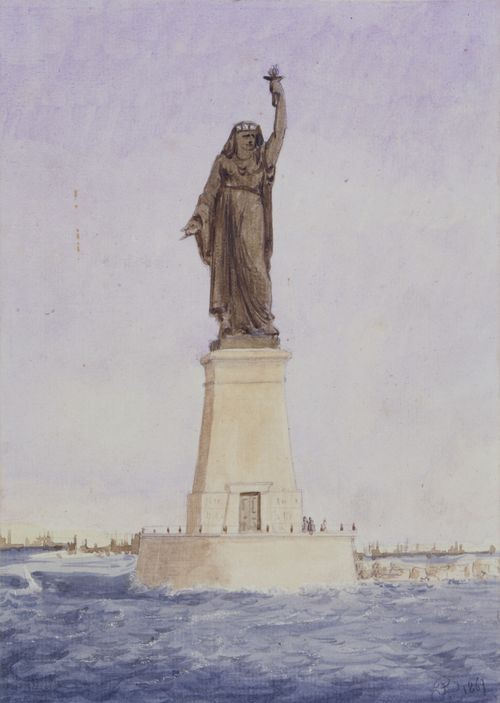
1869 sketch by Frederic Bartholdi, the year the Egyptian project was commissioned.
Unfortunately for Bartholdi, at the inauguration of the Suez Canal later that year he was informed Egypt would not be able to proceed with the massive lighthouse due to its cost. A disappointed Bartholdi put his plans for Egypt Brings Light to Asia on hold, but he wouldn’t have to wait long to put his ideas into action.
In 1870, Bartholdi was commissioned by France to design the Statue of Liberty, a monument proposed in 1865 by Edouard de Laboulaye representing the freedom and democracy of the United States. Bartholdi named the statue, “Liberty Enlightening the World” and clearly took inspiration from his original Egyptian design.
Liberty’s Crown Inspired by Ptolemy III
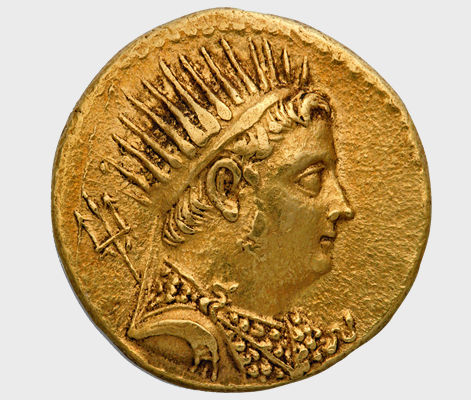
“Here again there is a direct Egyptian connection, as Ptolemaic kings represented themselves as Helios on earth. In antiquity, the crown given to Liberty in New York was worn more prominently by Ptolemy III on his official coinage. Bartholdi’s statue had been intended originally for Port Said beside the Suez Canal. The placement in Egypt would have been quite logical.”
– Robert K. Ritner, Professor of Egyptology, University of Chicago
There you have it. One of the most recognizable monuments in the world and a powerful symbol of American freedom was first conceived in Egypt to represent a Muslim farmer. In an alternate universe a colossal statue eerily similar to the Statue of Liberty may very well be sitting on the banks of the Suez Canal, shining its light on the Arab world.
Read More: Liberty’s Torch: The Great Adventure to Build the Statue of Liberty.
Cover Image: Celso Flores

